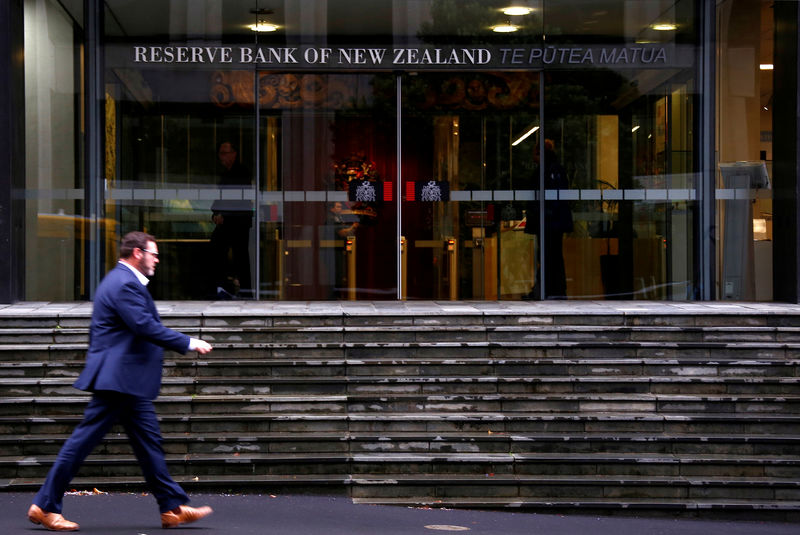WELLINGTON (Reuters) - New Zealand's central bank stunned markets on Wednesday by cutting the official cash rate (OCR) by a bigger-than-expected 50 basis points to a record-low 1.00%, and looked set to keep policy lower for longer in the face of growing economic risks.
The surprise move by the Reserve Bank of New Zealand (RBNZ) sent the kiwi dollar tumbling to 10-month lows, and comes days after the Trump administration labeled China a currency manipulator in a dramatic escalation of the Sino-U.S. trade war.
"The Monetary Policy Committee agreed that a lower OCR is necessary to continue to meet its employment and inflation objectives," RBNZ's monetary policy committee said in a statement accompanying its rates decision.
"GDP growth has slowed over the past year and growth headwinds are rising. In the absence of additional monetary stimulus, employment and inflation would likely ease relative to our targets," the statement said.
The central bank lowered its cash rate by 25 basis points (bps) in May as international trade frictions clouded the growth outlook, and economists polled by Reuters had predicted policymakers would cut rates again this week by a quarter of a percentage point.
The New Zealand dollar tumbled 1% to $0.6443, a 10-month low, and bond yields slumped after the rates decision as markets priced in further easing, possibly as early as next month.
RBNZ's forecasts released with the statement show another cut is possible by the end of the year which would take the OCR below 1%.
New Zealand's move follows rate cuts by global policymakers who have been forced to inject more stimulus as fears grow over the broadening fallout of the U.S.-China trade dispute on the global economy.
And events this week rang more alarm bells for policymakers, as the trade war took a dramatic turn for the worse on Monday after the U.S government labeled China a currency manipulator for the first time since 1994.
The morphing of the Sino-U.S. trade conflict into a currency war leaves open economies like New Zealand heavily exposed and vulnerable to global pressure.
Last week, the U.S. Federal Reserve cut rates for the first time in a decade, and the Reserve Bank of Australia eased policy in both June and July.
Surprisingly strong New Zealand employment figures this week tempered some of the pessimism though leading indicators suggest growth will remain under pressure as businesses face tough times.

New Zealand's business outlook hit a 11-month low in July and consumer confidence sank. And while GDP growth picked up slightly in the first quarter, a largely weak set of global factory activity, trade and company earnings reports point to a softening outlook.